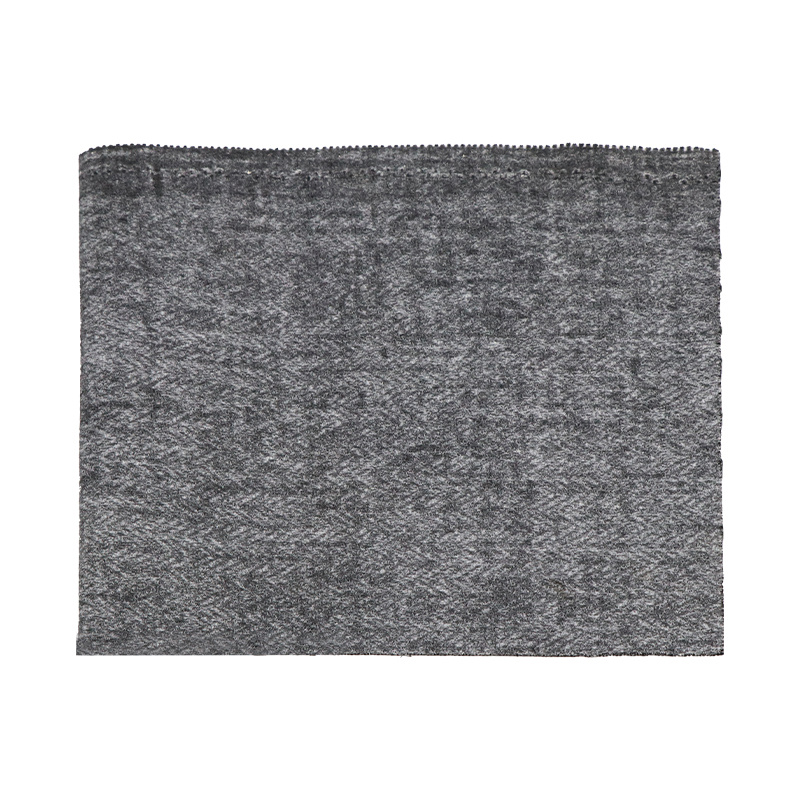Pre-oxidized silk silicone fabric is used for industrial welding protective curtains and as an insulation and protection layer for new-energy batteries.
Oct 20,2025

Pre-oxidized silk fire-resistant cotton is an intermediate product made by thermally stabilizing polyacrylonitrile (PAN) fibers at high temperatures. It serves as a crucial foundational material for manufacturing carbon fibers, boasting an exceptionally high limiting oxygen index—typically exceeding 45%—and classifying it as a quasi-noncombustible material. At elevated temperatures, it neither melts nor softens and shrinks, nor does it produce molten droplets. Instead, it inherently resists acid and alkali corrosion, withstands harsh chemical environments, and offers excellent protection against radiation. Pre-oxidized silk composite silicone fabric is developed either directly from pre-oxidized silk fire-resistant cotton or by combining it with silicone rubber. After this composite process, the material’s water resistance, sealing performance, and weatherability are significantly enhanced, making it a versatile material that not only delivers outstanding intrinsic flame-retardant and thermal-insulation properties but also provides robust physical and chemical protection against external environmental challenges.
Characteristics of pre-oxidized silk-composite silicone fabric:
1. Excellent high-temperature resistance and flame retardancy: Pre-oxidized fibers can operate continuously at 220°C without aging or shrinking, and they withstand temperatures as high as 1000°C without burning. When combined with silicone fabric—also highly resistant to high temperatures—the resulting material can endure hundreds or even thousands of degrees Celsius, delivering stable, reliable thermal insulation and fire protection.
2. Excellent chemical stability: Both the pre-oxidized fibers and the silicone-based substrate are resistant to acid and alkali corrosion, enabling the composite material to remain stable in a variety of chemically aggressive environments.
3. Excellent Physical and Safety Features: Pre-oxidized fiber material boasts excellent flexibility, resulting in an overall soft fabric. When burned, pre-oxidized fibers neither shrink nor drip—this critical characteristic is essential for safety protection, helping to prevent secondary injuries. Additionally, the composite material typically exhibits superior electrical insulation properties.
4. Enhanced Durability and Functionality: The silicone layer effectively improves the material's waterproof, sealing, and anti-aging properties, making it better suited for complex and demanding industrial environments. Additionally, through various structural designs, it can be combined to create additional functional layers, such as sound insulation and radiation protection.
Applications of pre-oxidized silk-composite silicone fabric:
1. Industrial Safety and High-Temperature Protection Field
Welding Protective Curtains/Boards: In metal welding and cutting work areas, this fabric is used to create protective curtains that effectively block flying sparks and molten slag, safeguarding surrounding equipment and personnel while remaining non-flammable and undamaged itself.
High-temperature fireproof blankets: Whether used to cover flammable materials and prevent ignition, or as a tool to extinguish small, initial fires in emergencies—or even to wrap around the body for safe escape—pre-oxidized silk-silica fireproof blankets are the ideal choice.
Industrial insulation sleeves/covers: Sewn into various shapes, these sleeves and covers are wrapped around the exteriors of high-temperature equipment such as pipelines, reaction vessels, and engine exhaust pipes, providing thermal insulation, heat retention, and energy-saving benefits while also preventing personnel from suffering burns.
Sealing Gaskets and Pads: Thanks to their excellent resistance to high temperatures and chemical corrosion, they are used as sealing gaskets or pads in industrial furnaces, valves, and pump bodies—ensuring reliable sealing even under harsh operating conditions.
2. Firefighting and Specialized Apparel Field
Firefighter's fire-resistant suit: Commonly used for the outer or insulating layer of firefighting gear, providing firefighters with critical thermal protection in hazardous fire environments.
Industrial-grade specialized protective clothing—such as high-temperature workwear used in industries like metallurgy, glass manufacturing, and casting—can safeguard workers from radiant heat and accidental exposure to flames.
Fire blanket: A commonly stocked fire safety tool for homes and public spaces, used to smother flames by cutting off the supply of oxygen, effectively extinguishing initial fires involving cooking oil in pans, equipment, and other sources.
3. New Energy and the Transportation Sector
The thermal insulation and protective layer for new-energy vehicle battery packs is currently a critically important application. By placing pre-oxidized silk silicone fabric (or its composite materials) between battery modules—or even inside the entire battery pack—this layer can effectively prevent high temperatures and flames from spreading to adjacent cells in the event of thermal runaway in a single cell, thereby buying valuable time for passengers to escape safely.
Flame-retardant materials for high-speed rail and aircraft interiors: Used as fire-resistant and heat-insulating layers in seats, wall panels, and other interior components, meeting the stringent fire safety standards required for transportation vehicles.
Automotive exhaust pipe heat shields: Designed to wrap around car exhaust pipes, they reduce outward heat radiation, protect surrounding components, and provide a degree of sound insulation.
4. Aerospace Field
Thermal ablation materials for rockets and missiles: Used on certain non-highest-temperature areas of the rocket or missile body as an insulating layer to withstand the high-temperature airflow generated during high-speed flight.
Fire-resistant layer inside aircraft cabins: Installed within the cabin walls of airplanes and spacecraft, it provides fire isolation, enhancing flight safety.
PREVIOUS:
Related Posts
Contact Us
E-mail:
gdkaidun@163.com
Phone/WeChat:
86-131-3828-6677
Address:
Room 401, Building 21, No. 1, Keqing Road, Yundonghai Street, Sanshui District, Foshan City, Guangdong Province





